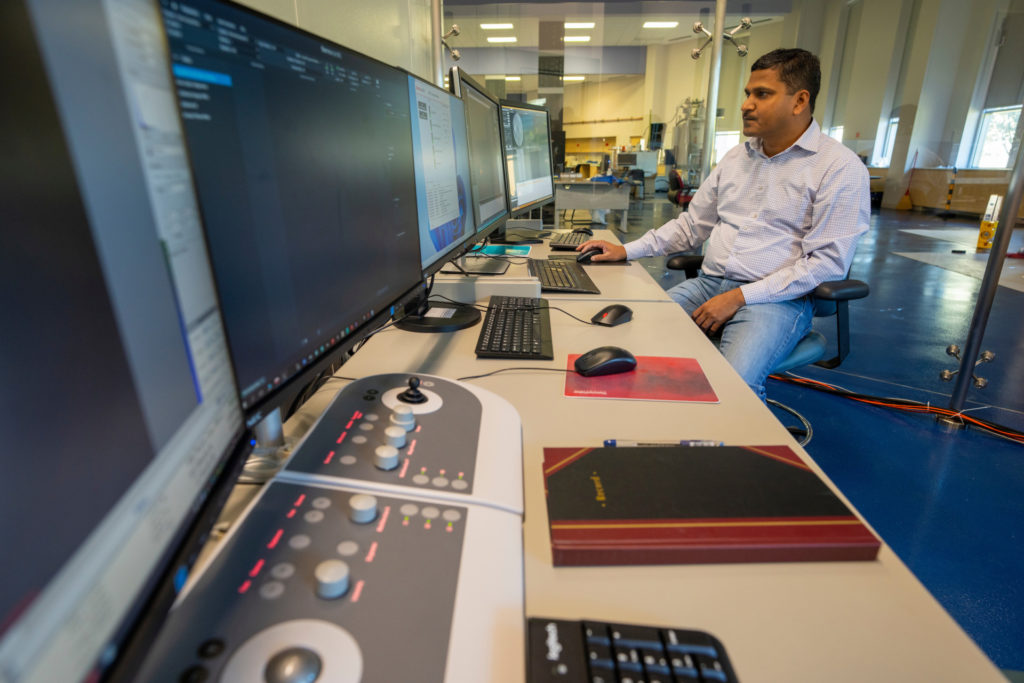Now available on campus: Microscopy tech that can create images of large and small molecules for scientists and engineers

A state-of-the-art resource for cryogenic-electron microscopy (cryo-EM) is now set up at the Texas A&M College of Agriculture and Life Sciences Department of Biochemistry and Biophysics and open to all academic and industry users.
The new instrumentation will greatly improve researchers’ ability to image large and small molecules on the Texas A&M University campus. That equipment includes a Thermo-Fisher Krios G4 as well as specialized tools for sample preparation.
“Our department houses the first high-end cryo-EM facility within The Texas A&M University System, and we have the newest, highest-resolution model of the instrument,” said Josh Wand, University Distinguished Professor and head, Department of Biochemistry and Biophysics. “We expect this resource to catalyze many local research projects in structural biology, chemistry, engineering or other fields.”
To unveil the resource and show how faculty, staff, students and industry researchers can utilize it, the Department of Biochemistry and Biophysics has organized a free, full-day symposium on Saturday, Dec. 3 in the Biochemistry and Biophysics Building in College Station.
“This leading-edge instrumentation can advance research and enhance teaching in many fields, and I’m excited to see the Texas A&M System community make use of it,” said Jeffrey W. Savell, vice chancellor and dean for agriculture and life sciences.
Cryo-EM technology in the past several years has advanced to the point where it can be used to discern the location of each atom in a large molecule such as a protein.
The new facility at Texas A&M offers state-of-the-art equipment for:
- Single-particle cryo-EM.
- Cryo-electron tomography.
- Microcrystal electron diffraction.
- Versatile, specialized imaging.
- Specimen preparation for obtaining the highest quality images.
The carefully renovated space for the instruments in the Biochemistry and Biophysics Building is among the most serene locations on campus. The enclosure was built to minimize vibration, electromagnetic field interference, and changes in temperature, humidity and airflow, according to Junjie Zhang, associate professor and cryo-EM faculty director in the department.
“Before the instruments were installed, you could hear a needle drop, it was so quiet,” Zhang said. “This type of room was originally designed for musicians. We also make sure electromagnetic fields are being shielded to make sure there is no interference from the nearby instruments in the building.”
The team also plans to expand the facility’s capability over the next few years.
“This is a good starting point for Texas A&M to integrate this capability, but it’s not the end point,” Zhang said.

